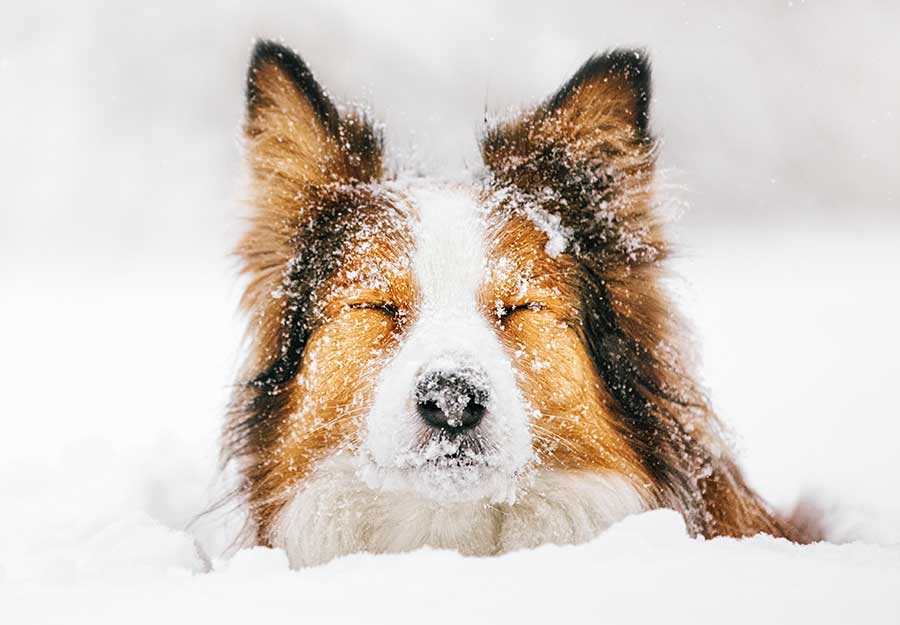
Has the dry winter air been damaging your dog's skin and coat? In this article we will explore the answers to these questions and more. Can dogs get dry skin? How do I help my dog's dry skin? Our harsh Canadian winters can do a number on your dog's skin and coat - they can experience itchiness, hot spots, and dandruff.
Winter weather can bring drier air, and the effects of these cold spells can cause multiple skin and coat issues in your pets. Protect your dog's sensitive skin this winter with some simple skin and coat tips.
You may be asking yourself what you can do to prevent and treat dryness on your dog this winter.
How do I treat my dog's itchy, flaky dry skin in the winter? Luckily, we have many tips to help you treat your fur babies.
Let's look at some of the easiest ways to rejuvenate Fido's skin and ditch the winter itch. Treating dry skin is often challenging. You'll have to try different methods during cold weather.
Dog Dry Skin in Winter
Dog skin is very similar to human skin. Because of this, it can be difficult to keep moisturized in winter. This is largely because winter brings a more arid, cold, and dry wind – which can lead to chapping on the skin underneath the immune system of your furry friend's coat daily.
This can be made worse if they already struggle with food diet limitations or allergens or if they spend an excessive amount of time outside.
Dry skin on dogs in the winter can affect of all sizes. While dry skin isn't inherently life-threatening, it can make your pup very uncomfortable - and lead to itching, inflammation, and even infection.
Dry skin on dogs in the winter can affect of all sizes. While dry skin isn't inherently life-threatening, it can make your pup very uncomfortable - and lead to itching, inflammation, and even infection.
Symptoms of Dry Skin on Dogs
Dryness is not the same for all dogs, but we're sure if they could speak, they would all agree – it can come with some uncomfortable symptoms! There are many things that dog dry skin can cause:
-
- Itching
- Dandruff
- Flaking
- Pimples
- Scaling
- Hair loss
- Inflammation
- Odour
- Increased Oiliness
- Scabs
- Cracking
Other Causes of Dry Skin in Dogs

While the drastic change in the weather and frigid temperature drops are usually the culprits of your dog's dry skin when we reach the winter months, there are other causes that can make your doggo's hide dry, itchy, or flaky.
If you're noticing your dog is suffering from pretty severe symptoms, there might be an underlying cause.
There are many conditions or issues other than the weather that can mean your dog has dry, itchy, or flakiness in the winter. These include dog food allergies, parasites, canine scabies and serious medical disorders such as Cushing's disease or hypothyroidism.
If your dog has dry patches then you'll want to try home remedies to return your furry friend's skin and coat health. However, you'll want to determine the underlying cause to figure out the treatment needed.
Allergies
Flea saliva can cause allergic reactions in some dogs. Dogs' can get allergies just like humans. Dog allergies can include seasonal allergies and food allergies, as well as environmental allergies. These allergies can often lead to dry patches on dogs and other symptoms.
Things like flea salvia, pollen, dust mites, omega 3, and animal dander can cause these allergies. These allergies can lead to a skin condition called Atopic Dermatitis. This can cause dry skin, itching, and redness, as well as secondary skin infections. You may need to apply topical cream.
Flea bite allergies are one of the most common causes of dry skin on dogs. Keep your dog and house free from fleas, and talk to your family veterinarian to discuss possible treatment options.
Parasites
Dry, flaky skin could be an indication of parasites, which can cause mange. This includes the Demodex mite and canine lice.
Learn more about the dangers of bug bites and how to treat them in Recognizing and Treating Bug Bites on Dogs.
Infections
Dogs can also develop problems from fungal and bacterial infections. Canine skin infections are usually diagnosed by veterinarians who take cell samples for cytology.
Dry winter patches are a sign that the infection may be a bigger problem. Some infections, like the fungal infection Ringworm, are also transmissible to people and will require appropriate treatment.
Systemic Disorders
Sometimes if your dog has dry skin, it's a sign that there is a more serious problem. Two main metabolic conditions impact dogs: Cushing's disease and hypothyroidism. Dry skin can be accompanied by hair loss, dry and brittle hair, and other symptoms.
Dry skin can also be caused by autoimmune diseases or cancer. These are serious conditions.
Breed-specific Skin Conditions
Some breeds are more susceptible to conditions than others, particularly when it comes to dry skin. The Xoloitzcuintli, Chinese Crested, and other hairless breeds are more vulnerable to conditions. Some American dogs can also be impacted due to breeding problems.
Siberian Huskies and Alaskan Malamutes can also be affected by zinc-responsive dermatosis. A veterinarian can diagnose your dog's dry patches.
6 Solutions to Treat Dry Skin in Winter
While cold, dry air may not be the only contributor to your pet's skin issues, it is still a factor. Talk to your vet to rule out parasites, allergies, ear mites, and other health conditions that could be the underlying cause of their skin and coat woes.
1. Humidity
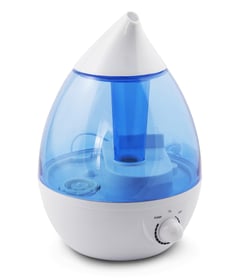
Dry winter air can impact a dog's skin. You can't control the weather outside, but you can affect the environment in your home. Try using a small humidifier in your house to increase the moisture level of your home.
2. Hydration
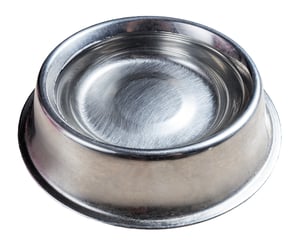
Adding moisture to your dog's environment will help, but keeping your pet hydrated will be the most critical factor in their coat health. Hydration is especially important if you are feeding a strictly dry diet, like kibble.
Combat the dehydrating effects of dry food by encouraging more moisture intake for skin health. Most do not drink enough naturally, so get creative.
Moisture can be added to their food, their treats, and even their toys. Add fresh and wet foods to their meals or offer your dog some delicious bone broth as a treat as training
You can even make your own bone broth and customize it to your furry friend's skin health needs and taste preferences. Check out our homemade recipe
3. Healthy Fats and Oils
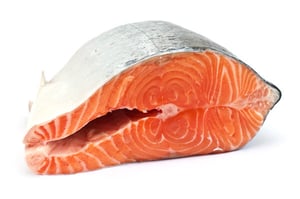
Adding healthy fats and oils into your pet's diet can help to soothe dry, flaky skin and reduce inflammation that can cause itchiness.
They help to support the cell cycles in your canine's skin, keeping the cells alive for longer and allowing them to shed less frequently. This will not only reduce itchiness but also limit general shedding and dandruff.
Animal sources, like wild-caught salmon oil, are the most effective, as they contain a wider variety of omega fatty acids and a better balance of omega 3 to omega 6 fatty acids or fatty acid supplements. Plant-based essential fatty acids, such as flaxseed oil, hemp oil, and camelina oil, are a great option too.
Supplementing with healthy fats and oils is a yummy addition to coconut oil in any meal. They are easy to incorporate and welcomed by any dog. Start by adding a tiny amount of winter itch to introduce the flavour, and slowly work your way up to a full dose.
4. Evaluate the Diet
You'll want to determine the cause of dryness in your dog so you can effectively treat it. And sometimes, skin issues can be caused or exacerbated by changes or allergens in your dog's diet. Yes, dog food can actually cause dryness in most dogs especially if your furry friend suffers from nutritional deficiencies and food allergies.
Check out What Should I Feed My Dog for tips on navigating the confusing world of dog food
5. Grooming
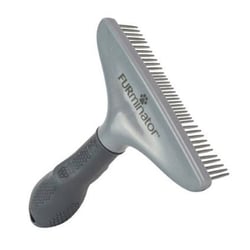
Regular grooming should always be a part of your pet's care routine, but it's especially important during seasonal changes. Daily brushing can help to reduce coat shedding, as well as to remove walking dandruff and bacteria that collect on the surface of the skin.
Stick to a simple slicker brush or a comb to maintain a healthy coat. Deshedding brushes should be used no more than 1-2 times per week, as they can remove healthy fur and irritate the skin when used too frequently.
Occasional baths can help too, but bathing should be infrequent. Excessive bathing can actually lead to skin disorders, fungal infections or yeast infections. Aim for once every 4-6 weeks. If you need to bathe your dog more frequently, then you should consider using just warm water with a small amount of baking soda. This can help deodorize without stripping any of the healthy oils from their skin.
Hop over to our Ultimate Dog Grooming Guide to find out how to safely groom your pooch at home.
6. Topical Moisturizers
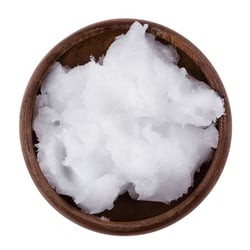
Sometimes soothing your dog's dry skin is best done by topical treatments. Topical moisturizers like Vet's Best Conditioning Spray can reduce the winter itch and prevent your dog from licking or scratching the affected areas raw.
If you're looking for instant relief and want to try a DIY dry skin treatment at home, there are natural remedies you can use. Coconut oil, pure Aloe Vera, and even apple cider vinegar dilutions can help to eliminate the winter itch caused by flaky skin.
Dog owners should not overdo it with topical treatments. They can help soothe and condition, but they are rarely a total solution.
Treating Dry Skin on Dogs
If you notice your dog's symptoms include dry or itchy skin, then chances are your pet is suffering and requires prompt treatment to overcome the condition.
Although the signs may not be visible, all our tips on how to maintain healthy skin can be used preventatively. You may not see your dog's skin becoming dry, but that doesn't mean that winter isn't taking its toll. Anticipate your dog's skin problems this winter by building a consistent and healthy skincare routine all year round.
Frequently Asked Questions About Dry Dog Skin
How can I treat my dog's dry skin during winter?
Moisturize your dog's skin with a pet-safe moisturizer, feed a high-moisture diet, and brush daily to minimize the drying effects of cold and harsh weather.
Is bathing my dog less frequently beneficial for dry skin in winter?
Yes, reducing bathing frequency during winter can help retain natural oils on your dog's skin, preventing further dryness. Make sure to use only a pet-safe shampoo.
Can I use human moisturizers on my dog's skin?
It's best to use products formulated specifically for dogs because human moisturizers may contain ingredients that could be harmful or irritating to your dog's skin.
Are there any dietary changes that can help combat dry skin in winter?
High-moisture foods are ideal for managing dry dog skin, especially in winter. You can either switch to wet or raw food diet, or try to incorporate wet or fresh foods into their existing diet.
Should I adjust my home's humidity to help with my dog's dry skin?
Yes, using a humidifier in your home can help maintain proper moisture levels in the air, which can benefit your dog's skin during the dry winter months and prevent a skin disorder from developing.
When should I seek veterinary advice for my dog's dry skin?
If your canine's dry skin persists, worsens, or is accompanied by excessive itching, redness, or sores, consult with your veterinarian immediately.
.png?width=200&height=66&name=logo%20(1).png)


.jpg)
